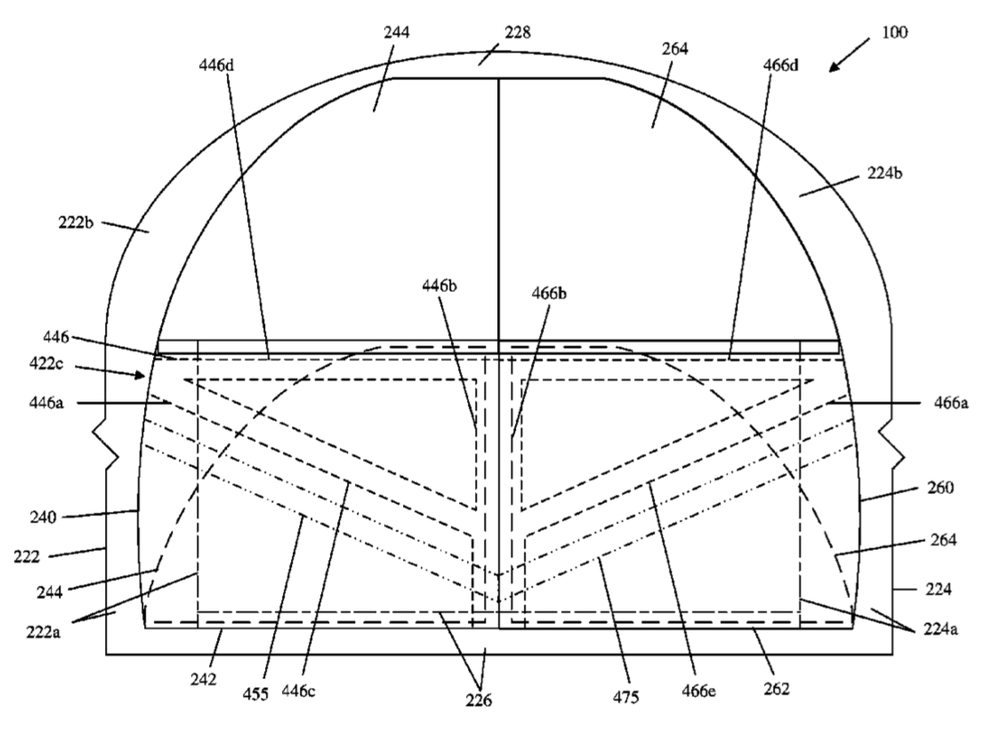Let the Apple Car rumors roll on. Apple has been granted a patent (number 10,286,761) for a “passenger vehicle door and window.”
As the Sellers Research Group (that’s me) has long said, I don’t think that Apple will actually build its own automobiles, but will work with other manufactures to implement technologies such as enhanced CarPlay into their vehicles. However, this patent certainly involves the physical design of a car, so I could be wrong.
Passenger vehicles for roadways, such as cars, trucks, or other automobiles, typically include doors with windows that are retractable into cavities of the doors. However, traditional internal door structures, such as those for transferring loading to a vehicle body of the vehicle during standardized loading events (e.g., standard dynamic and quasi-static loading during test procedures under Federal Motor Vehicle Safety Standards require that the windows be retracted into positions that are spaced apart from an end of the door.

For example, a traditional load transferring door structure extends inboard across an inboard-outboard thickness of the door, so as to be in close proximity to the vehicle body for transferring the standard loading thereto. As a result, this load transferring structure occupies the volume of the door cavity at its forward and/or rearward ends, which prevents the window from being retracted into the end volumes.
With the window being spaced apart from the forward and/or rearward ends of the door when retracted, the edge of the window must similarly be spaced apart a noticeable distance (e.g., several inches) from the end of the door when the window is raised. For example, a forward edge of the window may be spaced rearward of a forward end of a front door, or a rearward edge of the window may be spaced forward of a rearward end of a rear door.
Apple says that placement of these fixed structures also results in a “discontinuous or interrupted cut line (i.e., visible division between vehicle components) between the vehicle body and the window and visible door panel,” which the tech giant finds aesthetically unacceptable.
Here’s Apple’s summary of the invention: “A passenger vehicle includes a body, a powertrain, a first door, and a second door. The body defines a passenger compartment having an opening. The powertrain propels the passenger vehicle on a public roadway. The first door is movably coupled to the vehicle body to at least partially close the opening.
“The first door includes a door structure, which defines a cavity, and a first window that is movable between a lowered position in the cavity and a raised position in which a forward edge thereof is substantially coextensive with a forward end of the cavity. The second door is movably coupled to the vehicle body to at least partially close the opening.
“The second door includes a second window having a second forward edge. The rearward edge of the first window at least one of engages the second forward edge or compresses a seal with the second forward edge.”
Of course, Apple files for — and is granted — lots of patents by the U.S. Patent & Trademark Office. Many are for inventions that never see the light of day. However, you never can tell which ones will materialize in a real product.
